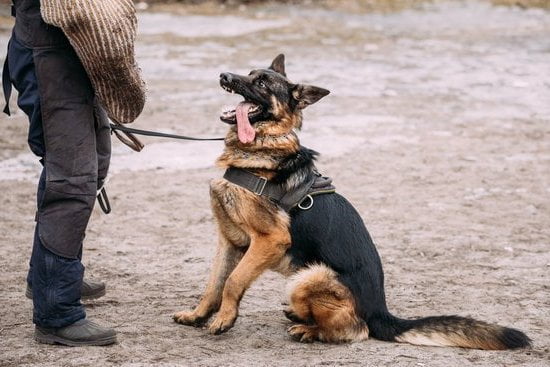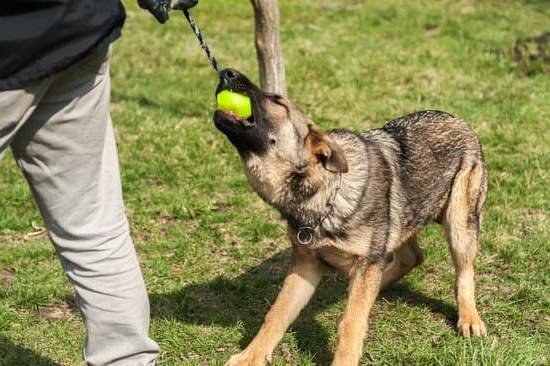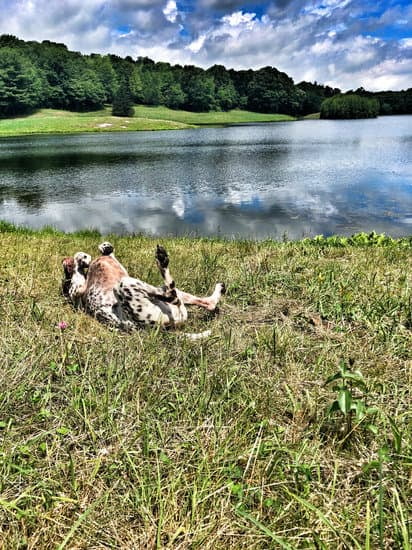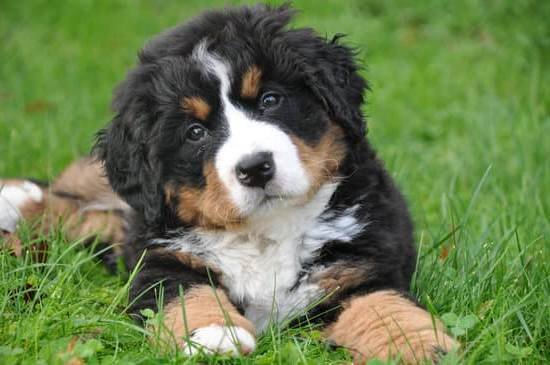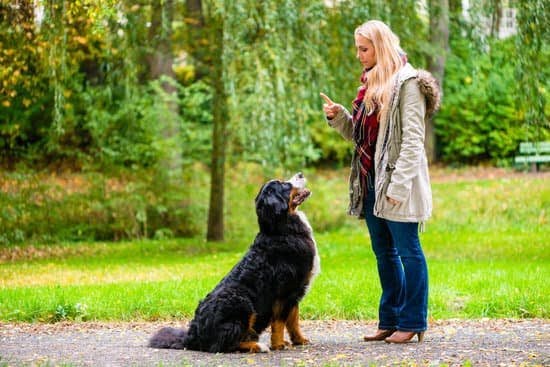Guard dog training is a crucial aspect of owning a guard dog. Whether you are a professional or a pet owner, it is essential to understand the significance of proper training for these powerful and intelligent animals. This article will provide an in-depth guide on guard dog training, covering everything from selecting the right breed to handling aggression and maintaining their well-being.
Selecting the right breed for guard dog training is the first step in ensuring success. Different breeds have varying temperaments and characteristics that make them suitable for certain types of guarding duties. Understanding these traits will help you make an informed decision when choosing your guard dog.
Once you have selected the right breed, basic obedience training is essential to establish control and discipline. This includes teaching commands such as sit, stay, and come, as well as leash training. Advanced techniques such as scent detection and protection work will further enhance your guard dog’s abilities. Understanding their behavior, building trust, and handling aggression are also vital components of effective guard dog training.
In this section, we will delve into each aspect of guard dog training in detail, providing valuable insights and practical tips for both novice and experienced trainers alike. Whether you are looking to train your own guard dog or seeking professional guidance, this comprehensive guide will equip you with the knowledge necessary to ensure the success of your guard dog training efforts.
Selecting the Right Breed for Guard Dog Training
There are many factors to consider when selecting the right breed for guard dog training. Each breed has its own unique characteristics and traits that make them suitable for certain tasks, including guarding and protecting. It is important to choose a breed that not only has the physical capabilities and instincts for guarding, but also the temperament and trainability for such a demanding role.
Physical Capabilities
When selecting a breed for guard dog training, it is essential to consider their physical capabilities. Guard dogs need to be strong, agile, and have good endurance. Breeds such as German Shepherds, Rottweilers, and Doberman Pinschers are known for their strength and athleticism, making them popular choices for guard dog roles.
Temperament
The temperament of a breed is another crucial factor in guard dog selection. Guard dogs must be obedient, confident, alert, and possess a natural protective instinct towards their owners and property. Breeds like Bullmastiffs, Boxers, and Giant Schnauzers are known for their protective nature and loyalty, making them well-suited for guard dog training.
Trainability
The trainability of a breed is also an important consideration when choosing a guard dog. Breeds with high intelligence and eagerness to please are easier to train for complex tasks such as guarding. Breeds like Belgian Malinois, Dobermans, and Akitas are known for their trainability and versatility in different working roles, including guarding.
By carefully considering the physical capabilities, temperament, and trainability of different breeds, individuals can select the right breed that best suits their needs for effective guard dog training programs.
Basic Obedience Training for Guard Dogs
When it comes to guard dog training, basic obedience is the foundation for all other training. A well-behaved guard dog not only provides security but also ensures the safety of its owners and those around them. Here are some essential aspects of basic obedience training for guard dogs:
1. Socialization: Introducing your guard dog to different people, animals, and environments from an early age is crucial for their development. This will help them become more comfortable and confident in various situations, making them better guards without being overly aggressive.
2. Commands: Teaching your guard dog basic commands such as sit, stay, come, and heel is essential for their obedience and control. These commands should be consistently reinforced through positive reinforcement techniques like treats and praise.
3. Leash Training: Guard dogs need to be comfortable walking on a leash without pulling or dragging their owner. Leash training helps maintain control over the dog in public and prevents them from behaving aggressively towards strangers or other animals.
Remember that consistency, patience, and positive reinforcement are key when it comes to basic obedience training for guard dogs. By establishing a strong foundation in obedience, you can build upon this to further enhance your guard dog’s skills in protection and security.
Advanced Training Techniques for Guard Dogs
Advanced training techniques are essential for turning a regular dog into an effective guard dog. While basic obedience training provides the foundation, advanced training takes that knowledge to the next level and teaches specific skills necessary for a guard dog’s role. This section will explore some of the key advanced training techniques for guard dogs.
Scent Detection Training
One of the most valuable skills for a guard dog is the ability to detect intruders or potential threats through scent. Scent detection training involves teaching the dog to recognize and alert to specific scents, such as unfamiliar individuals or dangerous substances. This type of training is often used in combination with positive reinforcement methods to ensure that the dog remains motivated and focused on the task at hand.
Attack and Release Commands
Training a guard dog to both attack and release on command requires advanced techniques and careful handling. It is crucial that these commands are taught by an experienced trainer who understands how to balance aggression with control. The goal is to teach the dog to respond quickly and decisively when instructed to engage an intruder, while also having the discipline to release on command, preventing them from causing harm unnecessarily.
Scenario-Based Training
In addition to individual skill development, advanced guard dog training often involves scenario-based exercises that simulate real-life situations. These exercises help the dog learn how to assess threats, make decisions, and respond appropriately in different scenarios. By exposing guard dogs to various situations during training, they can become more adaptable and better equipped to handle unexpected challenges in their role as protectors.
By incorporating these advanced training techniques into your guard dog’s regimen, you can ensure that they are well-prepared for their responsibilities as protectors. However, it is important to remember that this kind of training should be conducted under the guidance of a professional trainer who understands the nuances of guard dog behavior and knows how to cultivate their protective instincts while maintaining control.
Understanding Guard Dog Behavior
When it comes to guard dog training, it is crucial to have a good understanding of guard dog behavior. Guard dogs are trained for protection, and their behavior plays a vital role in their ability to perform their duties effectively. Understanding the natural instincts and tendencies of guard dogs is essential for successful training and handling.
Guard dogs are bred and trained to be alert, watchful, and protective. They are naturally territorial and may exhibit behaviors such as barking, pacing, or patrolling their surroundings. It is important for owners and trainers to recognize and interpret these behaviors to effectively harness them in guard dog training.
Additionally, guard dogs may display defensive behaviors when they perceive a threat. This can include growling, showing teeth, or even physically confronting the perceived threat. Understanding these behaviors is crucial for both the safety of the handler and the effectiveness of the guard dog in protecting its territory.
In order to properly train a guard dog, it is essential to understand their behavior and work with their natural instincts rather than against them. By doing so, handlers can effectively channel the inherent traits of guard dogs into successful protection and security measures.
| Guard Dog Behavior | Importance |
|---|---|
| Natural territorial instincts | Recognizing and channeling these instincts is essential for effective training. |
| Defensive behaviors | Understanding defensive behaviors helps ensure safety for both the handler and the guard dog. |
| Natural protective instincts | Harnessing these instincts can lead to successful protection and security measures. |
Building Trust and Bonding With Your Guard Dog
Building a strong bond with your guard dog is essential for effective guard dog training. Trust and bonding are crucial for creating a strong working relationship between the handler and the dog. It is important to remember that guard dogs are not just pets, they are working animals with specific roles to fulfill. Therefore, establishing trust and bonding will ensure that the guard dog follows commands, stays focused, and remains loyal to its handler.
One way to build trust and bonding with your guard dog is through positive reinforcement. This involves rewarding desired behaviors with treats, praise, or playtime. Positive reinforcement not only strengthens the bond between you and your dog but also enhances their obedience training. Additionally, spending quality time with your guard dog, such as going for walks or engaging in interactive play sessions, can help strengthen the bond between both of you.
Consistency is another key factor in building trust and bonding with your guard dog. Establishing consistent routines for feeding, exercise, and training will create a sense of security for your dog. This predictability helps your guard dog feel comfortable and secure in their environment, ultimately strengthening the bond between you both.
Committing to regular training sessions will also contribute to building trust and bonding with your guard dog. Training exercises provide mental stimulation for the dog while reinforcing their obedience. Furthermore, these sessions provide an opportunity for communication between you and your guard dog which helps to strengthen the bond.
| Guard Dog Training | Building Trust and Bonding With Your Guard Dog |
|---|---|
| Positive reinforcement is essential for building trust | Rewarding desired behaviors with treats or praise |
| Establishing consistent routines creates a sense of security | Regular feeding times contribute to bonding |
| Regular training sessions provide mental stimulation | Reinforce obedience while strengthening the bond |
Handling Aggression in Guard Dogs
Aggression in guard dogs can be a serious issue if not addressed properly. It is important to understand that aggression is a natural behavior in dogs, but it needs to be managed and controlled, especially in guard dog training. Here are some tips for handling aggression in guard dogs:
- Identify the root cause: The first step in addressing aggression in guard dogs is to identify the root cause of the behavior. Is the dog feeling threatened or protective of its territory? Is it responding to a specific trigger such as loud noises or unfamiliar people? Understanding the underlying cause will help in determining the appropriate course of action.
- Positive reinforcement training: Utilizing positive reinforcement techniques such as rewarding good behavior and ignoring or redirecting negative behavior can be effective in managing aggression in guard dogs. Training methods that focus on building trust and establishing boundaries can help in shaping their behavior.
- Seek professional help: If the aggression in your guard dog seems unmanageable or dangerous, it is important to seek help from a professional trainer or behaviorist who specializes in guard dog training. They can provide guidance and support in addressing the aggression while ensuring the safety of both the dog and its handlers.
It’s important to note that aggressive behavior should never be encouraged or tolerated, but rather addressed with patience, consistency, and proper training techniques. With careful management and guidance, aggressive tendencies can be minimized, allowing your guard dog to fulfill its role effectively while maintaining a well-balanced temperament.
By following these tips and seeking professional guidance when needed, you can effectively manage and address aggression in guard dogs during their training process. Remember that every dog is different, so it’s important to tailor your approach based on your specific dog’s needs and behaviors.
Maintaining the Health and Well-Being of Guard Dogs
Guard dog training is more than just teaching a dog to protect a property or person. It also involves ensuring the physical and mental well-being of the dog. Maintaining the health and well-being of guard dogs is crucial for their ability to perform their duties effectively and live a long, happy life.
One important aspect of maintaining the health of guard dogs is providing them with regular veterinary care. This includes vaccinations, regular check-ups, and prompt treatment of any illnesses or injuries. Additionally, guard dogs should be kept at a healthy weight through proper nutrition and regular exercise to prevent obesity-related health issues.
In addition to physical health, it’s also essential to address the mental well-being of guard dogs. Just like any other dog, they need mental stimulation and social interaction to prevent boredom and behavioral problems. Engaging in activities such as interactive play, obedience training, and socialization can help keep guard dogs mentally sharp and emotionally balanced.
Another crucial aspect of maintaining the well-being of guard dogs is providing them with a safe and comfortable living environment. This includes access to clean water, shelter from extreme weather conditions, and protection from potential hazards in their surroundings. By addressing both the physical and mental aspects of their well-being, guard dogs will be better equipped to fulfill their protective role effectively while living a fulfilling life.
Common Mistakes to Avoid in Guard Dog Training
In conclusion, guard dog training is a crucial aspect of owning a guard dog. It is imperative to understand that proper training can make the difference between having a reliable protector or an unpredictable liability. Selecting the right breed for guard dog training is important, as different breeds have different temperaments and abilities. Basic obedience training lays the foundation for more advanced training techniques, so it is essential to start with this step before moving on to more specialized skills.
Understanding guard dog behavior is key in effective training. By comprehending how they think and react, handlers can better communicate with their dogs and build trust and bonding. Handling aggression in guard dogs requires skill and knowledge, as well as patience and consistency. It is important to address any signs of aggression early on before they escalate into unmanageable behavior.
Maintaining the health and well-being of your guard dog is not only necessary for their overall quality of life, but also impacts their ability to perform their duties effectively. Proper nutrition, regular exercise, and routine veterinary care are all vital components in ensuring that your guard dog remains healthy and strong.
Lastly, being aware of common mistakes to avoid in guard dog training will help handlers navigate potential pitfalls and set themselves up for success in raising a well-trained and reliable protector to watch over their home or property.
Frequently Asked Questions
How Long Does It Take to Fully Train a Guard Dog?
The time it takes to fully train a guard dog can vary depending on the breed, age, and individual temperament of the dog. On average, it can take anywhere from 6 months to 2 years of consistent training to fully train a reliable guard dog.
How Do I Start Protection Training My Dog?
Starting protection training for your dog should begin with ensuring they have a solid foundation in basic obedience commands. Once obedience is established, introducing bite work and protective behaviors can begin under the guidance of a professional trainer experienced in protection dog training.
What Is a Level 1 Protection Dog?
A Level 1 protection dog is typically trained for personal or family protection. These dogs are taught to bark and hold an intruder at bay until their owner commands them to stop. They are also trained to protect their owners from physical harm when necessary, but without overly aggressive behavior.

Welcome to the blog! I am a professional dog trainer and have been working with dogs for many years. In this blog, I will be discussing various topics related to dog training, including tips, tricks, and advice. I hope you find this information helpful and informative. Thanks for reading!

